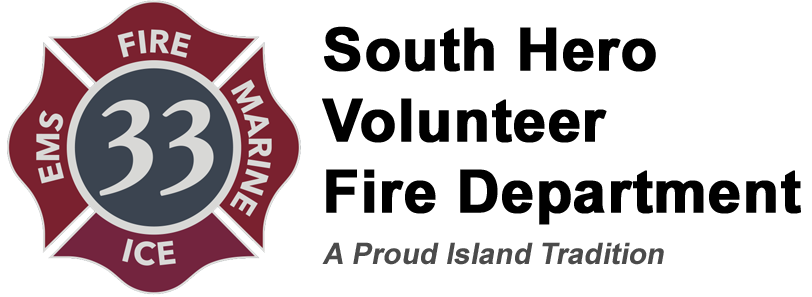Types of Fire Extinguishers
Multi-Purpose Dry Chemical
These are probably the most common for residential homes. They are typically rated for types A, B, and C fires; This means they can extinguish solid fuels (Wood, Paper, etc), liquid fuels (Gasoline, light cooking oils, grease), and energized electrical fires.
Water
Water fire extinguishers are as their name implies just pressurized water; they are generally rated as “Class A” only and should only be used to put out solid-fuel fires. We carry water extinguishers on some of our trucks and work well when you know that there are no flammable liquids or electrical equipment involved but are not the best choice for your home unless you want to store multiple extinguisher types next to each other.
CO2
CO2 Extinguishers work off compressed CO2, they extinguish fire by displacing oxygen in the area. They work welll for Electrical fires as they do have have corrosive properties of Dry-Chemical extinguishers nor the conductivity issues of water. They will also extinguish some small flammable liquid fires, but we recommend a dry-chemical or specialized extinguisher for those fires. There is also an inherent danger of using an extinguisher designed to displace oxygen, the user may suffer from the same effects as the fire.
Specialized
Type K and UL 711A fire extinguishers are designed specifically for kitchen and grease fires. The extinguishing agent will float on top of a grease fire and block oxygen and off-gassing of the oil/grease effectively smothering two of the three components necessary for fire.
There are many other specialized fire extinguishers, designed for clean rooms, flammable metals, and highly specific applications.
Locations:
The first fire extinguisher you purchase for your home should be for the kitchen, statistically this is the most likely location for a fire. It should be either a UL 711A or an ABC multipurpose dry chemical extinguisher. It should located at the entrance to the kitchen. Many people locate them next to the stove, however, in a fire you may not be able to access it if the fire is too hot.
The second extinguisher should be located in your bedroom. This should be an ABC type extinguisher. This extinguisher can help you make it to an exit in the case of a fire.
Additional extinguishers should be located at or outside the entrances to your garage, basement, workshops, and anywhere else required by NFPA 10.
Size/Labeling/Coverage area.
Fire Extinguisher sizes are generally referred to by weight or by UL listing. Most life safety codes no longer reference by weight, but is common among average citizens. Most single family homes will have extinguishers ranging from “2.5 pounds” to “10 pounds”
UL labels also denote sizes of extinguishers, and are typically how the fire service refers to sizes. A typical residential extinguisher may be labeled as a “2A:10B-C”. This extinguisher is as effective as 2 1/2 gallons of water on “Type A” fires (wood, paper, solid combustibles), it should also be able to extinguish up to 10 square feet of a “Type B” or liquid fire such as cooking oil or gasoline, and it suitable for extinguishing live electric wires/devices
Each “A” in the UL label is equivalent to 1.25 gallons of water,
Each “B” number refers to square feet of coverage in a liquid fire.
Expiration / Service
Pressure gauges should be checked once a month. Every fire extinguisher will have an end of service date listed on it. Have expired extinguishers serviced or replaced. Fully discharged fire extinguishers can be accepted at Drop-Off Centers in Georgia, North Hero and Alburgh as scrap metal for no charge, and in Grand Isle for a fee.
Any dry chemical extinguisher must be professionally serviced or replaced after use. Regardless of how much is initially used. Once the powder has been expelled through the valve, it will slowly leak the propellant and may not work when it is needed most.
USCG approval for marine
The United States Coast Guard approves portable fire extinguishers, for vessels typically found on Lake Champlain and other bodies of water in Vermont they will likely be either certified as a “B-1” or a “B-2” Fire extinguisher. For Vessels 26 feet and under a single B-1 extinguisher is sufficient. For vessels over 26 feet Two B-1 extinguishers or One B-2 extinguisher is required.
